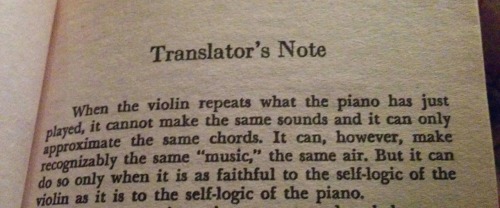[COVER] 승관 - 내 생에 아름다운 (원곡:K.will)
[COVER] 승관 - 내 생에 아름다운 (원곡:K.will)
So this isn’t studyblr related but.... wow I love this cover so much. Please give Seungkwan all the love and attention he deserves. Also, go stream Getting Closer, kiddos! Have a wonderful holiday season!
More Posts from Littlelanguagefox and Others
Social Media in Spanish and French
NOTE: some of these terms do not translate directly; this is because I based myself off of the vocabulary employed by each website. What they consider equivalent vocabulary might differ from what you might find in a dictionary.
Social media – Las redes sociales – Les médias/réseaux sociaux (m.)*
*Previously, in French, the expression Web 2.0 was also used, but nowadays it is being replaced more and more with the former term.
Home – El inicio – L’accueil (m.)
Message – El mensaje – Le message
Notification – La notificación – La notification
News feed – Las noticias – Le fil d’actualité
To search – Buscar – Rechercher
Post – La publicación – La publication
Photo album – El álbum de fotos – L’album photo (m.)
Shortcuts – Los accesos directos – Le raccourci
Ad – La publicidad – La publicité
Event – El evento – L’évènement (m.)
Friend list – La lista de amigos – La liste d’amis
Profile – El perfil – Le profil
About – La información – L’information (f.)
Comment – El comentario – Le commentaire
To comment – Comentar – Commenter
Invitation – La invitación – L’invitation (f.)
Birthday – El cumpleaños – L’anniversaire (m.)
See more – Ver más – Afficher plus
Page – La página – La page
Game – El juego – Le jeu
To share – Compartir - Partager
Like – Me gusta – J’aime
To add – Añadir - Ajouter
Friend – El amigo – L’ami/e
Poke – El toque – Le poke
Tumblr
Dashboard – El escritorio – Le tableau de bord
Follower – El seguidor – L’abonné (m.)
Post – La publicación – Le billet
Activity – La actividad – Le trafic
Draft – El borrador – Le brouillon
Inbox – La bandeja de entrada – La boîte de réception
Account – La cuenta – Le compte
Text – El texto – Le texte
Chat – El chat – La discussion
Quote – La cita – La citation
Blog – El blog – Le blog
Reblog – Rebloguear – Rebloguer
Note – La nota – La note
Settings – La configuración – Le paramètre
App – La aplicación – L’application (f.)
Username – El nombre de usuario – Le nom d’utilisateur
Bio – La biografía – La biographie
Block – Bloquear – Bloquer
Tweet – El tweet – Le tweet
To tweet – Twittear – Tweeter
Mention – La mención – La mention
Reply – La respuesta – La réponse
To retweet – Retwittear – Retweeter
Trend – La tendencia – La tendance
To unfollow – Dejar de seguir – Se désabonner
To suspend – Suspender – Suspendre
Poll – La encuesta – La question
Hashtag – La etiqueta – L’hashtag (m.)
Suggestion – La sugerencia – La suggestion
To pin – Destacar – Épingler
It’s okay to romanticise the small things about your day-to-day life. It’s okay to romanticise sleeping in, waking up to the sun tickling your skin. It’s okay to romanticise the texture of fingers against a page. Sometimes to save your day you need to romanticise sitting at a desk and working, or romanticise studying hyped up on coffee. It’s okay to picture yourself as if you were the mc in a movie. Watch yourself go through shit and know that it’s just the climax of your own story, and that while you sit in your room sobbing to sad songs, good things are just around the corner.
Sometimes to be okay or get through the day you need to romanticise the simple things.




|| 161018 ||
My new shelves + bio, stats, and Korean homework!
One of the more profound things I’ve heard recently came from a Mr. Rogers documentary. In a clip from his show, Mr. Rogers had just visited with a musician, and tells his audience that some people play music, and some people don’t, and that’s okay.
And then he said, “The important thing is to find something you feel good about doing.”
That phrasing struck me. “Something you feel good about doing”. Most people would have phrased it as “something you enjoy doing”. Or “something you’re good at doing”. But Mr. Rogers’ subtly different phrasing leads to a profoundly different connotation. “Something you feel good about doing” may not be enjoyable–people who work in hospitals or in disaster zones might not enjoy much of their day, but they probably feel good about helping people. “Something you feel good about doing“ may not be something you’re particularly good at–you may be a terrible artist by any objective standard, but if you feel good about making your art, then it’s a worthwhile endeavor. Looking for “something you feel good about doing” can help you find a truly satisfying life path.
That phrase is also helpful with daily decision-making. Too often, I can make choices based on “what feels good.” I put aside tasks that are too stressful or avoid activities that seem too difficult, in favor of mindlessly browsing the internet. And I enjoy myself. I feel good while I’m doing that. But at the end of the day, I don’t feel good about how I spent my time. However, reminding myself to do “something I feel good about doing” can motivate me to accomplish those more difficult tasks. It can push me to do something outside of my comfort zone, to try something new that I might not be much good at. And maybe this is a blindingly obvious philosophy to everyone else. But I’m grateful for the reminder.

from john ciardi’s translation of “the inferno” by dante alighieri
i think what’s most amazing about learning languages is you have to earn them. you can’t buy your way in, youre no better off because you’re rich or at a private school or from a particular place. you have to work the same as anyone else
How I prepped for the academic job market

I am by no means an expert on academic jobs just because I now (miraculously?) have one. But I have been told that I am organized, and, yes, that is because being an anxious person sometimes means having a system for everything. So before I totally bury all memories of the academic job market, I thought I would put together a timeline of some of the things I did to get ready to search for academic jobs…
My to-do list started very informally in the first year of my PhD program. I know that sounds over-the-top-early but the job market takes a lot of work. Checking things off one at a time helped me to feel in control. Here’s how I prepared for the academic job market as a PhD student:
Year 1
Do research that excites you: Enthusiasm for my research ended up being my momentum through a lot of the hard stuff that came later. Try to set yourself up to do the research that you want to do right away. This might include some trial-and-error and trying out different topics until you find the one.
Read The Professor is In: My MA advisor insisted I read this the summer before I started the PhD and, as always, she was totally right. When I told other grad students I had read a book about how tough the job market is they either said “I don’t need to read that yet” or “I don’t want to know how bad it is.” Ummmm…denial is not a good strategy. Knowing what you’re getting into is a good strategy. Even though the information about prepping job market materials was not yet relevant, having a framework for what would be evaluated helped me to define my grad school goals.
Year 2
Write papers that help you figure out your research area: I was pretty bad at this in my MA (I wrote papers about everythingggg). It’s ok to spend some time exploring topics, but once I had a topic area, I tried to use grad seminar papers to narrow in on that topic. This involved writing some papers that ended up being duds, and some that ended up being important parts of my dissertation. This leads to…
Ask about publishing: In seminars, I tried to have meetings with professors where I told them I wanted an academic job and needed experience publishing. They were usually willing to help develop seminar papers that had (somewhat?) original arguments in them, which is necessary for publishing. I was also not afraid to ask for lots of publishing help–how does it work? where should I submit this? can I use a cover letter you have written as a template? Publishing is confusing and took me a while to get used to.
Network smarter, not harder: This was the year I realized that going to giant conferences and hoping to meet people who did similar things was just not working. I reassessed and submitted to several smaller conferences that had the explicit goal of having senior faculty mentor grad students. It was amazing! First, these conferences were genuinely helpful, second, they were genuinely…genuine. I didn’t feel that I had to do any super fake networking anymore because I was really there to have conversations that developed my research.
Year 3
Read job postings: If your discipline has a listserv, subscribe, if not, check out the InsideHigherEd job postings. Note any trends in hiring. I don’t think you can totally pivot toward every job (duh) but you can think about how to make your application more friendly to what everyone seems to want. In my case, people who teach organizational communication were often also being asked to teach several other classes, so I made sure to ask to teach one of those so it would be on my record before the job market.
Submit, submit, submit: This is the year I got the most journal submissions under review. Some got accepted, some got (mega) rejected. Most needed several rounds of hardcore revisions that took 12-14 months. Submitting in year 3 gave me time to do those revisions so that I could use the articles as writing samples on applications.

Year 4
Prep materials: I drew on as many resources as possible to prep my job market materials–career services helped with my CV, our graduate teaching program on campus helped me writing my teaching and diversity statements, I asked recent graduates for example cover letters, my advisor read and edited cover letters, my DAD read and edited cover letters (what can I say he loves helping with grammar). It takes a village. Use the village. Oh, now is also a good time to reread TPII book for tips on writing decent materials.
Get organized: I had a spreadsheet where I put all of the relevant job information, especially deadlines, keywords, and information about each department.
Ask your letter writers: I did this in August. I also made them all a “job application digest”–just a word document with all of the jobs I submitted to and some notes about what I had said in my cover letter, so they could tailor rec letters.
Throw yourself at your dissertation: Every interview asked how I was planning to finish the dissertation. Making real progress made this question much easier. I definitely lost myself to the job market for a solid month in November. Then, I realized that my dissertation was the only thing I had control over. So I got back to work.
And here are some other resources that I also enjoyed reading:
Thoughts on diversity statements: What the heck even are they?, plus thoughts on the hidden curriculum of college and designing inclusive teaching on campus (Ps don’t just use these to write a diversity statement use them to actually do work in your classroom and campus environment so that what you write on your diversity statement is genuine).
A breakdown on cover letters
Another great post on the job hunt
Campus visit small talk
This post originally appeared on my WordPress
fun project for linguists who don’t have many hobbies: every time you realise that you specifically like or don’t like a certain word, put it on a list. at the end of the year, analyse it for linguistic patterns
Holiday Giveaway!
Hi guys! I have decided to do a giveaway to celebrate the holidays and a milestone I reached!
The giveaway starts today, December 15th, and closes December 22nd at 11:59pm EST.
The winner will receive their choice of one ebook (pdf version) from “Korean Made Simple” by GO! Billy Korean:
Korean Made Simple: A beginner’s guide to learning the Korean language: “Korean Made Simple is a book for anyone who wishes to begin learning the Korean language. No matter your age, you can learn how to read, write, speak and understand Korean.Learn the Korean writing system, Korean culture, and even history. Learn over 1,000 vocabulary words and phrases through 20 in-depth and fun lessons, filled with plenty of examples. Additionally, practice sections with answer keys are built into every chapter.This book also contains additional advanced level notes for more skilled Korean speakers looking for a review of basic grammar and concepts, including a full appendix covering sound change rules.”
Korean Made Simple 2: The next step in learning the Korean language: “Korean Made Simple 2 continues right from where we left off, and will help to bring your Korean language abilities to the next level. No matter your age, you can learn how to read, write, speak and understand Korean.Learn more about Korean grammar, culture, history, holidays, and even idioms. Learn over 1,000 new vocabulary words and phrases through 20 in-depth and fun lessons, filled with plenty of examples. Additionally, practice sections with answer keys are built into every chapter.This book also contains advanced level notes for more skilled Korean speakers looking for a review, as well as an appendix dedicated to additional reading practice in Korean.”
Korean Made Simple 3: Continuing your journey of learning the Korean language: “Korean Made Simple 3 once again continues from where we left off, with a focus on helping you to strengthen and expand your Korean language abilities. No matter your age, you can learn how to read, write, speak and understand Korean.Learn even more about Korean grammar, culture, history, idioms, onomatopoeia, and even dialects. Learn over 1,000 new vocabulary words and phrases through 20 in-depth and fun lessons, filled with plenty of examples. Additionally, practice sections with answer keys are built into every chapter.This book also contains advanced level notes for more skilled Korean speakers looking for a review, as well as an appendices dedicated to introducing Korean dialects and onomatopoeia.”
How to Enter:
Must be following this account, koreanstudytips. I will check!
Reblog this post to count as 1 entry. Additional reblogs will not count as extra entries!
To receive an additional entry comment your favorite part about learning Korean!
The winner will be chosen at random. If the winner does not respond within 48 hours another winner will be selected!
Good luck!
-
 suachun1 liked this · 6 years ago
suachun1 liked this · 6 years ago -
 littlelanguagefox reblogged this · 6 years ago
littlelanguagefox reblogged this · 6 years ago





